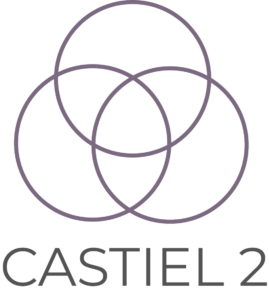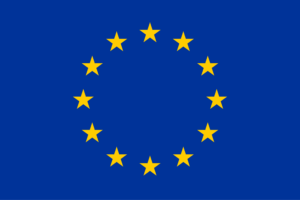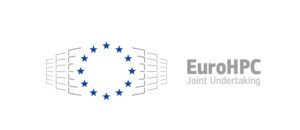GYSELA A drift-kinetic semi-Lagrangian 4D code for ion turbulence simulation. A new code is presented here, named Gyrokinetic SEmi-LAgragian (GYSELA) code, which solves 4D drift-kinetic equations for ion temperature gradient driven turbulence in a cylinder (r,θ,z). The code validation is performed with the slab ITG mode that only depends on the parallel velocity. This code uses a semi-Lagrangian numerical scheme, which exhibits good properties of energy conservation in non-linear regime as well as an accurate description of fine spatial scales. The code has been validated in the linear and non-linear regimes. The GYSELA code is found to be stable over long simulation times (more than 20 times the linear growth rate of the most unstable mode), including for cases with a high resolution mesh (δr∼0•1 Larmor radius, δz∼10 Larmor radius).
CoE: EoCoE
KMC/DMC are general purpose programs for the simulation of chemical reactions taking place at crystal surfaces. The used simulation method is a Discrete Event Simulation with continuous time. In the literature this is commonly called a Dynamic Monte Carlo simulation (DMC) or Kinetic Monte Carlo simulation (KMC). The general purpose nature of the program is visible in a clear separation between model and (simulation) method. The simulation model is specified in terms of surface structure and changing patterns, reflecting the reactions taking place at the surface. Several methods can be employed on the model differing only in simulation speed and memory use.
CoE: EoCoE
MetalWalls A classical molecular dynamics software dedicated to the simulation of electrochemical systems. Its main originality is the inclusion of a series of methods whichallow a constant electrical potential to be applied to the electrode materials. It also allowsthe simulation of bulk liquids or solids using the polarizable ion model and the aspherical ionmodel.MetalWallsis designed to be used on high-performance computers and it has alreadybeen employed in a number of scientific publications. It was for example used to study thecharging mechanism of supercapacitors (Merlet et al.,2012), nanoelectrowetting (Choudhuriet al.,2016) and water desalination devices (Simoncelli et al.,2018).
CoE: EoCoE
EURAD-IM system consists of 5 major parts: the meteorological driver WRF, the pre-processors EEP and PREP for preparation of anthropogenic emission data and observations, the EURAD-IM Emission Model EEM, and the chemistry transport model EURAD-IM (Hass et al., 1995, Memmesheimer et al., 2004). EURAD-IM is a Eulerian meso-scale chemistry transport model involving advection, diffusion, chemical transformation, wet and dry deposition and sedimentation of tropospheric trace gases and aerosols. It includes 3d-var and 4d-var chemical data assimilation (Elbern et al., 2007) and is able to run in nesting mode.
CoE: EoCoE
Grand Canonical Adaptive Resolution Scheme (GC-AdResS) is getting more recognition throughout the scientific community. The main aspect is to couple two simulation boxes together and combine the advantages of classical atomistic simulations with those from coarse gained simulations. The goal of the pilot project is to develop a library or recipe with which GC-AdResS can be implemented in any MD Code. Our current focus is adjusting the implemented Version of GC-AdResS in GROMACS. The long-term goal of this project is to promote and stimulate the community to use it as a tool for multiscale simulations and Analysis.
CoE: E-CAM
ESPResSo++ is a software package for the scientific simulation and analysis of coarse-grained atomistic or bead-spring models as they are used in soft matter research. ESPResSo++ has a modern C++ core and flexible Python user interface. ESPResSo and ESPResSo++ have common roots however their development is independent and they are different software packages. ESPResSo++ is free, open-source software published under the GNU General Public License (GPL)
CoE: E-CAM
DL_MESO is a general purpose mesoscale simulation package developed by Michael Seaton for CCP5 and UKCOMES under a grant provided by EPSRC. It is written in Fortran 2003 and C++ and supports both Lattice Boltzmann Equation (LBE) and Dissipative Particle Dynamics (DPD) methods. It is supplied with its own Java-based Graphical User Interface (GUI) and is capable of both serial and parallel execution.
CoE: E-CAM
ElVibRot General quantum dynamics code using curvilinear coordinates and a numerical kinetic energy operator (with Tnum) : (i) Vibrational levels, intensities for floppy molecular system (ii) Wave-packet propagation with or witout time dependant Hamiltonian (iii) Quantum gate and optimal control.
CoE: E-CAM
Quantics is suite of programs for molecular quantum dynamics simulations. The package is able to set up and propagate a wavepacket using the MCTDH method [Beck]. Numerically exact propagation is also possible for small systems using a variety of standard integration schemes [Lefo], as is the solution of the time-independent Schrödinger equation using Lanczos diagonalisation. The program can also be used to generate a ground state wavefunction using energy relaxation (i.e. propagation in imaginary time) and with the “improved relaxation” it is even possible to generate (low lying) excited states. Within the Quantics package there are also programs to propagate density operators (by solving the Liouville-von Neumann equation for open or closed system) [Mey], a program for fitting complicated multi-dimensional potential energy function, programs for determining bound or resonance energies by filter-diagonalisation, parameters of a vibronic coupling Hamiltonian, and many more. Recent developments include the use of Gaussian wavepacket based methods (G-MCTDH) and interfaces to quantum chemistry programs such as Gaussian and Molpro allow direct dynamics calculations using the vMCG method [Ric]. The following modules are extension of Quantics functionalities developed at E-CAM Extended Software Development Workshops.
CoE: E-CAM

The website is operated as part of the CASTIEL 2 project. This project has received funding from the European High-Performance Computing Joint Undertaking (JU) under grant agreement No 101102047. The JU receives support from the European Union‘s Digital Europe Programme and Germany, Italy, Spain, France, Belgium, Austria, Estonia.

